The title of the exhibition, As Days Go By, subtly references Martin Edge’s time in his Strathpine studio. The walls are aglow in a bright orange hue – his favourite colour since childhood – and bedecked in photos and clippings. An impressive collection of antique curios provides quiet company. Commenting on his experience of the recent lockdown he says, “It sometimes felt like I was stopped forever at a red traffic light and waiting for it to turn green! But my sense of humour is still going strong, painting makes me happy.” Martin’s vibrant works resonate with his sense of joie de vivre and optimism.
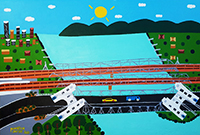
Gold Coast-based Erica Gray imparts that the current exhibition’s paintings and sculptures further her life.e.quatic series in celebrating the vivid colours, intricate patterning and structural complexities observed in a variety of marine creatures, coral formations particularly. Known as the ‘rainforests of the sea’, coral reefs have long been venerated by ancient civilizations for their alchemical, curative and ornamental properties.
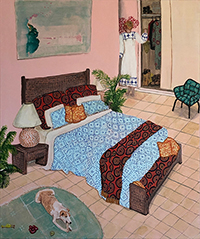
‘Everything has a story,’ states Melissa Egan. ‘Not just people, but each creature, tree and stone has a history.’ She understands that the art of story-telling was highly valued in times gone by for it was the means by which a culture’s traditions were kept alive. Melissa’s enchanting visual tales however have a somewhat contrary intent. They transport the viewer far from the everyday and into another world where gravity has been cancelled and specifics of time and place have long since dissolved. In the words of the late Robert Hughes, we are ‘offered a glimpse of a universe into which we can move without strain. It is not the world as it is, but as our starved senses desire it to be.’
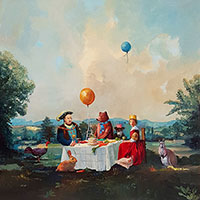
At once both intensely personal and universal in implication, Carolyn V Watson’s sculptures and paintings search for a momentary revelation of the inexplicable. There are questions to be asked, riddles to solve. She describes the exhibition as “a playful experiment in expectation”. “I want to activate the audience’s curiosity by inverting the familiar and thereby offer new readings of the known.” The show’s title alludes to the cryptic clues embedded in exaggeration and fables that can unlock a door into another awareness.
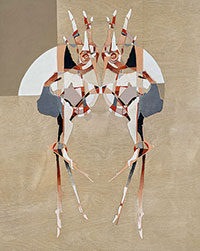
The most obvious property of a sculpture is its ‘solidity’ and occupation of real space. Just as in the very earliest shamanistic precursors, sculptures not only describe the shape of things observed but also intuited. The forms may emanate metaphysical and philosophical dimensions that transcend their physical matter. In this exhibition eight artists employing a diverse range of processes and media translate personal understandings of The Shape of Things.
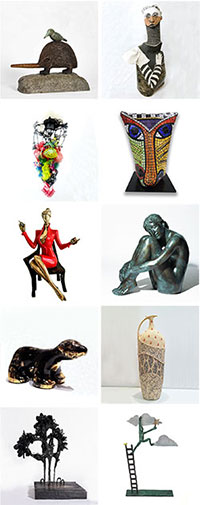
The title of Seabastion Toast’s new body of work embodies the notion of a fleeting, intangible ‘present’. Thought provoking, the apparent contradiction in its conjunction of words serves to liberate the imagination from the confines of convention and a linear reality. “I have a long standing interest in the tension and spaces between dichotomies,” she remarks. “It’s to do with perception. I like the enigmatic title of the show because it speaks of the subjective nature of time; the impermanence of things, the briefly wondrous.”
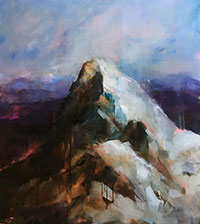
The exhibition celebrates Melbourne-based Samantha Everton’s 13 years of internationally recognised and multi-awarded photographic art making. The six series of works each visually explores the ‘straddling of dual worlds’ in a quest for self-identity and transcendence amidst cultural variances. Everton divulges she only subsequently realised that the scenarios and the characters inhabiting them had ‘grown up’ or evolved over the years, finding culmination and resolution in her most recent series, Indochine.
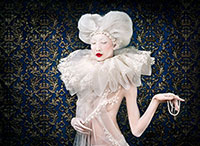
Fanciful, hybrid creatures populate Jill Lewis’s densely textured surfaces. Metaphorical intent imbues the imagery and her ‘silent conversations’. “Painting is my preferred method of communication with the world,” says the Melbourne-based artist. “I think in pictures.” Jill describes herself as a “bit of a people watcher”, revealing that it provides abundant inspiration for her art making. “Observing people’s behaviours from a distance can often tell me more about them than hearing their words. I’m interested in body language and facial expressions, particularly those conveyed in different social situations. It’s about the position characters take when relating to one another within a particular context and space. For me the canvas equates to such a space.”
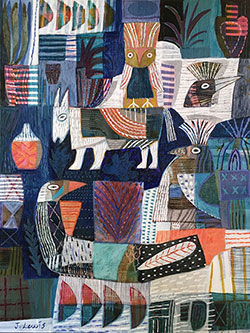
Peter Smets’ new body of work again accents the consequences of progress and technological change upon the landscape and its inhabitants. Carefully researched source material has been meticulously reconstructed in the studio where significant imagery was lifted out of its original context and presented as aesthetic phenomena. The sense of actual place is ambiguous but we inevitably feel a familiarity. Although cultural, environmental and economic interests are implicit, the paintings have an extraordinary psychological presence and metaphorical relevance.
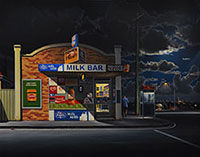
Jodie’s art makes no attempt to capture flora and fauna as a naturalist painter might do. An intense involvement with the materiality of her oil medium lifts her imagery beyond mere representation. The instinctual energy of Jodie’s luscious markings radiates a direct, sensory appeal. We encounter nature in all its textural vividness through the gestural freedom and quality of her palette knife technique. The vitality of Jodie’s tactile surfaces offers an alternative way to respond to our own environments – to experience the pleasure in just looking and feeling without recourse to analysis.
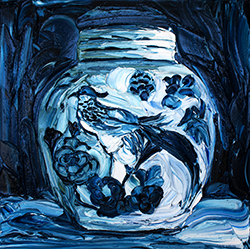
Receive e-mail updates on our exhibitions, events and more
Subscribe Now